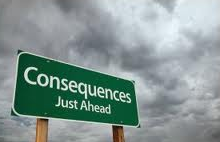 It’s been a big year. I’ve got a minion on the way and I made the transition from a pure business type into a blended creative role. After a number of long conversations and a pep talk from my CEO, I moved in to the lead role for PlayMesh’s frontline game, Valor. The role is varied and challenging – it sits at the cross-section of game design, producing, community, marketing, and creatives.
It’s been a big year. I’ve got a minion on the way and I made the transition from a pure business type into a blended creative role. After a number of long conversations and a pep talk from my CEO, I moved in to the lead role for PlayMesh’s frontline game, Valor. The role is varied and challenging – it sits at the cross-section of game design, producing, community, marketing, and creatives.
I normally shied away from creative pursuits professionally. Not sure why. Probably a mix of insecurity and a desire to buy a house one day. But here I am, working on a major evolution to Valor. An enormous component of that effort has been game design related, a task that has occupied night and day for the better part of the last few months. One thing I’ve noticed during the journey: game design is all about consequences.
Allow me to elaborate. I think the primary difference between a mediocre game designer and a great designer is an appreciation for consequences. I find a lot of folks who aspire to the title of designer do so because they have this deeply held conviction that they have the ultimate game stored in their head. This game is rarely fleshed out, but, I am told, it is AWESOME. Yet when you begin to critically analyze the idea, it begins to melt — features are removed, foundational elements are shifted and so forth.
It doesn’t take much creativity to come up with a novel game idea. What makes a designer excellent is the ability to take a good idea and fit it seemlessly into a broader framework. I arrived at this conclusion after I came up with 30 ”great” ideas for Valor and was forced to discard the lion’s share upon realizing they were untenable. But the real challenge came with the remaining ideas: 2 hours to think up, 3 months to balance. It’s given me a very deep appreciation for the work that must have gone into Warcraft III, League of Legends, or basically any other competitive game.
It’s probably worthwhile to give an example. I think perhaps the most complicated game to design for is Magic: The Gathering. For those not in the know, it’s a collectable card game of some reknown that has not just existed, but thrived for the better part of two decades. The game refreshes itself through consistent releases of new sets of cards that may be played in conjunction with all of the other previously released sets.
That means that every card needs to be balanced with every other card since the inception of the game (thousands of cards). And not just that, they need to consider how certain combinations of cards interact with one another to make sure things like infinite damage loops don’t exist. Even worse, they must come up with novel ideas that can fit these requirements. It’s pretty breathtaking.
For Valor, it’s been particularly interesting under our monetization model. If I want to change the pace of the game, I need to consider the effect on resource expenditure, the relative advantage between monetizers and non-monetizers, the rate of content consumption, and so on. Each one of these factors have a number of sub factors. For example, the rate of resource expenditure effects not only the likelihood of monetization, but also the power of units, the time until PvP becomes the player’s primary concern, the…well you get the idea.
